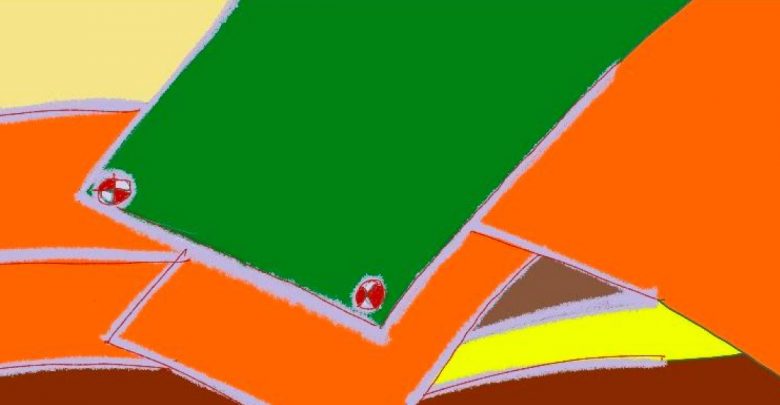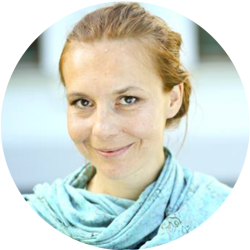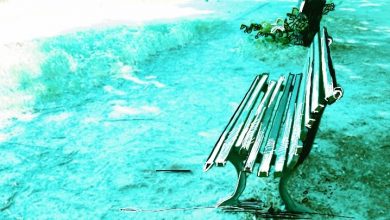Ongoing reflection with visual boards
In this article you will find 3 exercises which you can incorporate into your everyday learning. Those tools refer to reflective learning and using visual expression as a subconscious way to reach deeper understanding of oneself.

Why did I choose this tool?
Reflection is a natural process which happens anyway, we can’t ignore it or skip it when analyzing the competence learning to learn. The question would be: how could we reflect to maximize our personal development?
How does this apply to being a trainer?
Being in a field of non-formal education we are obligated to reflect on our own learning. It can’t happen that trainers train anyone to reflect without their own practice of doing this.
This article introduces visual tools which can transform reflection process into joy and bring bit more insight into everyday life.
Content:
Why to reflect?
„Reflection is part of the way learners investigate their needs. Reflection becomes necessary to internally process information to meet needs. And it must occur for the experience to become meaningful. Learners also must reflect in order to decide how to manage outside factors influencing learning.” (Harris)
Why to go visual?
Visual information is processed faster than a text, it empowers complex systems; in many cases, visualizations convey more meaning than verbal descriptions alone and visual explanations improve retention of information and deeper understanding of complex concepts.
Visualization is also a process, one that requires us to think critically and sequentially through the information at hand. (Vetria Byrd, 2015)
Exercise 1:
Find a place in your room where you could easily stick papers, or hang a board.
I would recommend to use the board (magnetic or pin board – they are quite cheap and allow to move and reorganize components).
Choose one of the methods?
Exercise 1. Lifelong learning board:
Materials: Big paper or a board as background.
Set of size A6 papers in two different colors, for example yellow and blue.
Take some moments to reflect every day. It is said that evening is the best time in the day for reflection.
Reflect on these two questions:
- What is my most important learning point (of a day, working time, free time etc.)?
- What question came up for me and remain unanswered so far?
The next step would be to write down the results of the reflection:
- On the yellow papers write your highlights of learning.
- On blue papers write down your unanswered questions.
Organize your papers on a board, yellow on one side of the board and blue on the other side.
Our mind has a unique predisposition to make meaningful forms out of random elements. It comes from permaculture philosophy. While looking at the random stars we can point and name particular shapes; the same goes with reading from random clouds.
This particular competence can be used also during our learning process.
Lets match!
Once per week, find a bit more time and look at your lifelong learning board. You may do 1 of the exercises:
- Match questions with answers: it may happen that the learning highlights (yellow paper) from one day would be the answer to the question from another day (blue paper). Stick them on a board together, in pair.
- Group questions and highlights: analyze the questions and learning highlights and group them into smaller collections. Give a title to each collection.
When to clear up the board?
It is up to your learning process. Some learners clear the board regularly after making a picture of the final image; other learners continue to work with the board for the next months. You need to decide when it’s time to start this process again.
Exercise 2.
Learning mosaic.
As it was mentioned in another article about setting learning goals, the more self-directed the learner is, the less precise learning goal he/she has. What they have is a clear and powerful intention of their own development.
Create the image illustrating your learning intention.
Materials:
A4/A3 paper (could be colorful). Several illustrated magazines. A pair of scissors and glue. Magnetic board, or just 10 magnets if you want to use your fridge as a board 🙂 Have more magnets in case you need them to hold your picture!
- Relax. Take a moment for yourself. Sit in a quiet place with minimum distractions. Try to relax your body and mind.
- Reflect. What is your intention as a learner? Which direction, path of learning would you like to follow? Which qualities are important for you? You may take notes, or record your voice, as you wish. Just grab your reflection somehow.
- Create: Create the collage representing your learning needs and learning elements that you would like to reach within the next months/year. Pick some images, random words, colors, patterns from a magazine. Make a collage. Let your imagination flow. If you simply like something, but you can’t find meaning for it, you can still use it in your collage. The meaning will come later on. Try to fill the paper with images without any free space between. It should look like mosaic of many little elements.
- Park. When your mosaic is ready, park it in a visible place (it could be your fridge, or the learning board).
- Measure. Whenever you look at your „Learning Mosaic,” try to reflect on the following question: which element of the mosaic was manifested today/recently? If there was one element that has been represented, cover/mark it with an additional magnet.
- Score 6. If your „learning mosaic” was covered already with 6 magnets, you may start working on a new learning mosaic.
Have fun!
And here is a short inspiration video on how to create vision board by drawing. I highly recommend this one. Please, watch a movie and get inspired!
https://www.youtube.com/watch?time_continue=3&v=BPWVc93iMFY
Doodle Institute, published in 2018
Exercise 3.
Memory game of own learning.
Do you remember „memory game” from your time of being a child? There is a pile of square cards with two identical pictures, and you have to find and pair the same pictures once you remember where they are? So, in this method you are invited to do a similar game for your learning.
This method allows you to reflect on a day, and then to reflect back on the 2 weeks of your learning. Thanks to this process you will understand your own learning flow and its outcomes better.
This reflection has two phases: the first phase is the creation of a game and the second phase is the game itself.
Material and preparation:
- 28 squares/cards cut from thick paper and colorful pens.
- Write 14 following questions, each question on one square. You will have 14 cards with written questions and 14 cards blank.
| I learned/ understood today that… | I would like today to give positive feedback about/to … | A key moment today for me was … | Today I experienced/ felt … |
| The picture that is today in my mind … | My next concrete step will be … | I was supported today by… / What helped me was … | What I am still puzzled about and want to look into more.. |
| Which skills did I use today? | Which knowledge did I use today? | Which of my qualities became visible today? | Which values influenced my behaviour today? |
| In which moments today could I mostly be myself? | What do I want to achieve? |
- phase
It takes 14 days.
Every day take just 1 card from a pile of questions, and 1 blank card.
Reflect on a question from the chosen card, and illustrate your answer on a blank card with a simple symbol/drawing. Put the ready pair aside (in an extra box, envelope, etc.).
Continue this process every day.
- phase
On the 14th day of reflection, after answering the last question, take all cards together and mix them.
Play „Memory”:
- Mix up the cards.
- Lay them in rows, face down.
- Turn over any two cards.
- If the two cards match, keep them.
- If they don’t match, turn them back over.
- Remember what was on each card and where it was.
- Watch and remember during the other player’s turn.
- The game is over when all the cards have been matched.
Reflection questions:
- How often do you like to reflect on your personal learning?
- How is it to visualize your own learning process?
- Which patterns have you recognized?
- What supported you in this process of learning?
- What would be your visual reflection method?





